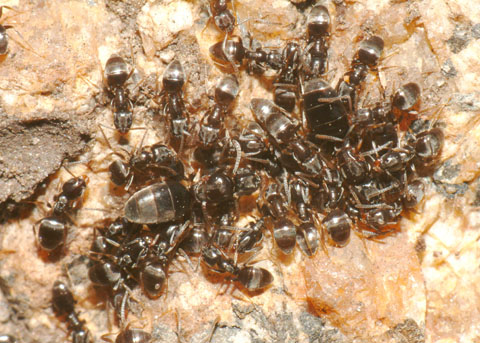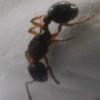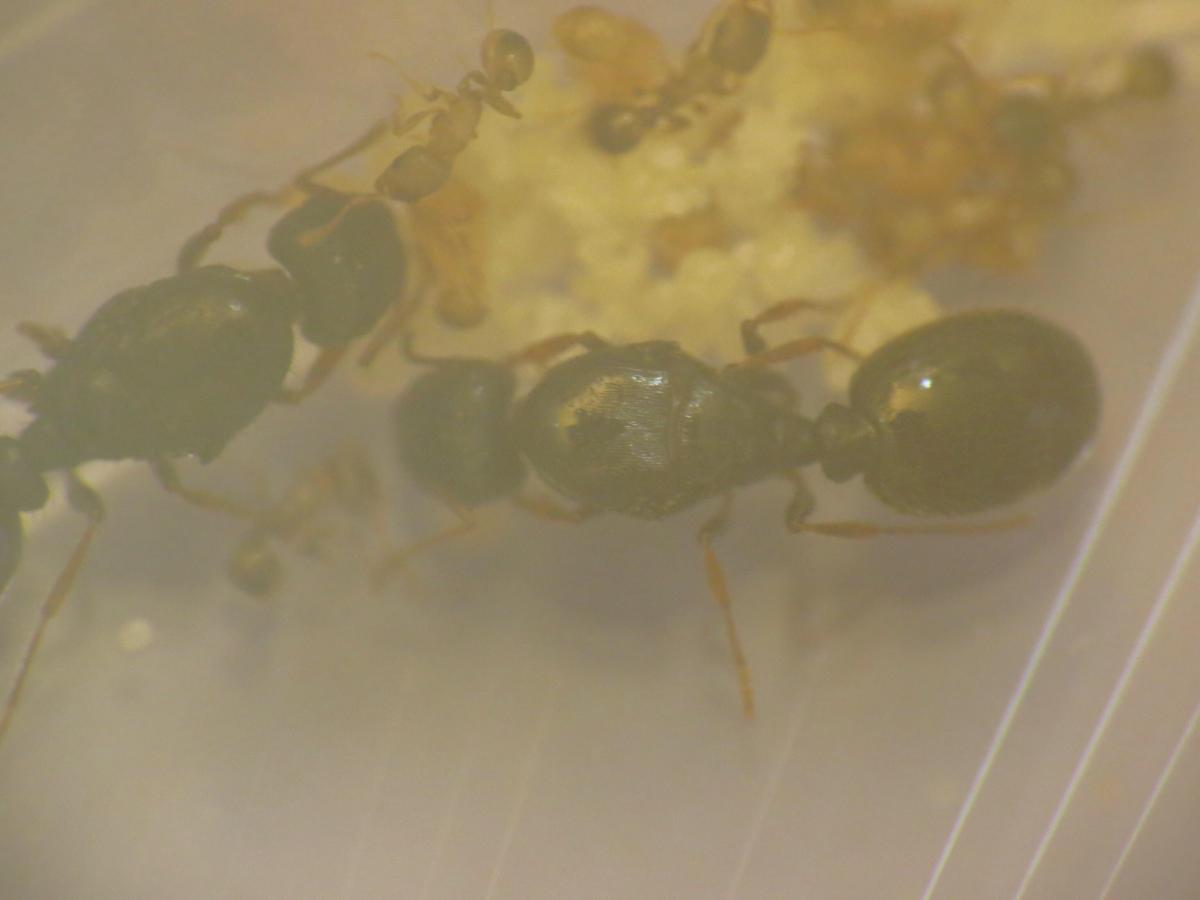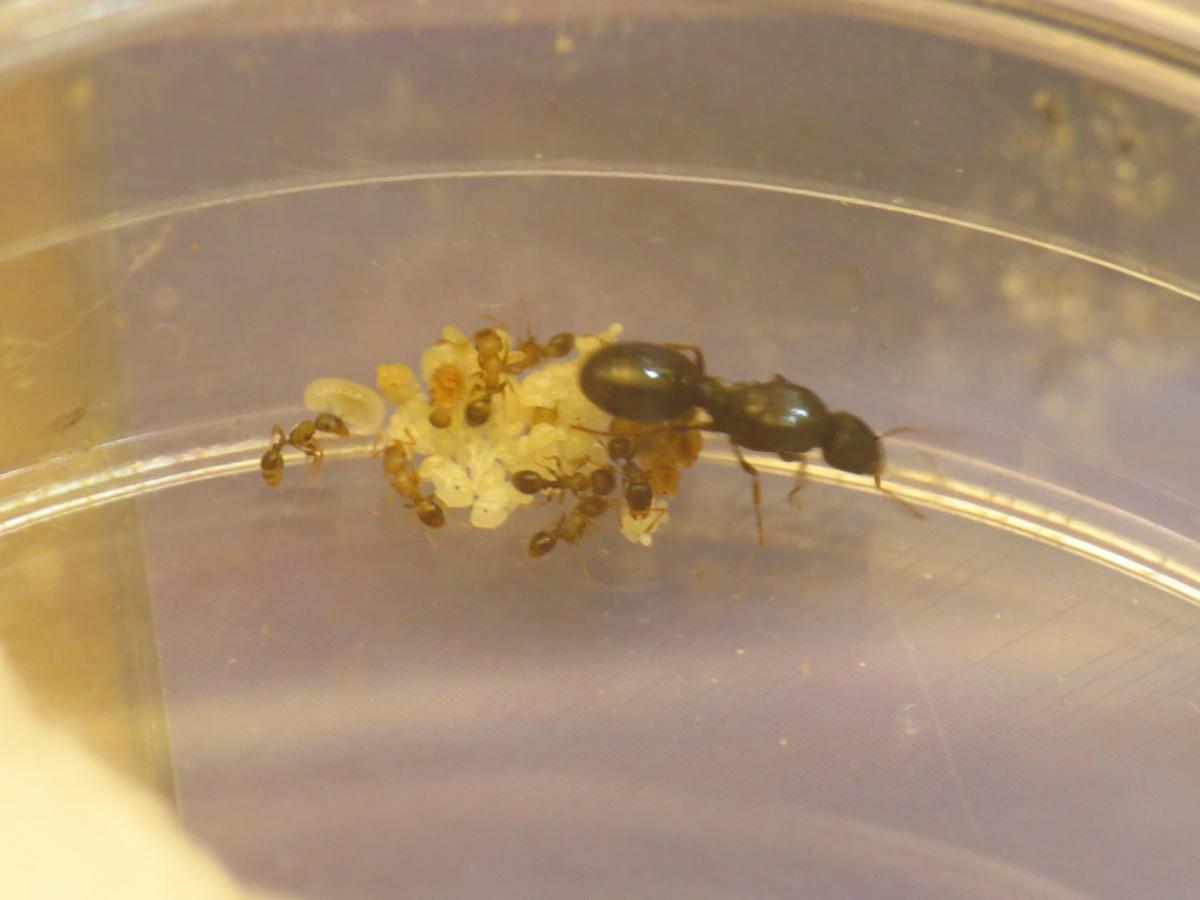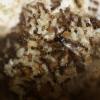This spring I found several queens of an unknown tetramorium species and kept them in test tubes and small petri dishes. I tried a small experiment, I put two queens together instead of keeping them alone. I have noticed the queens that were together did remarkably better and started a colony much quicker than the other queens. Here is a video link to the two queen colony which had just recently gotten its first nanitics.
I have to say though, those first nanitics are some of the smallest ants i have ever seen!
I have just put in their first insect, a small sowbug and they immediatley killed it and brought it in their petri dish nest. I plan to move them to a nest as soon as they have enough workers to fill their petri home.
Thank you all for identifying this species for me!
Don
Edited by Roachant, July 25 2015 - 7:36 PM.





